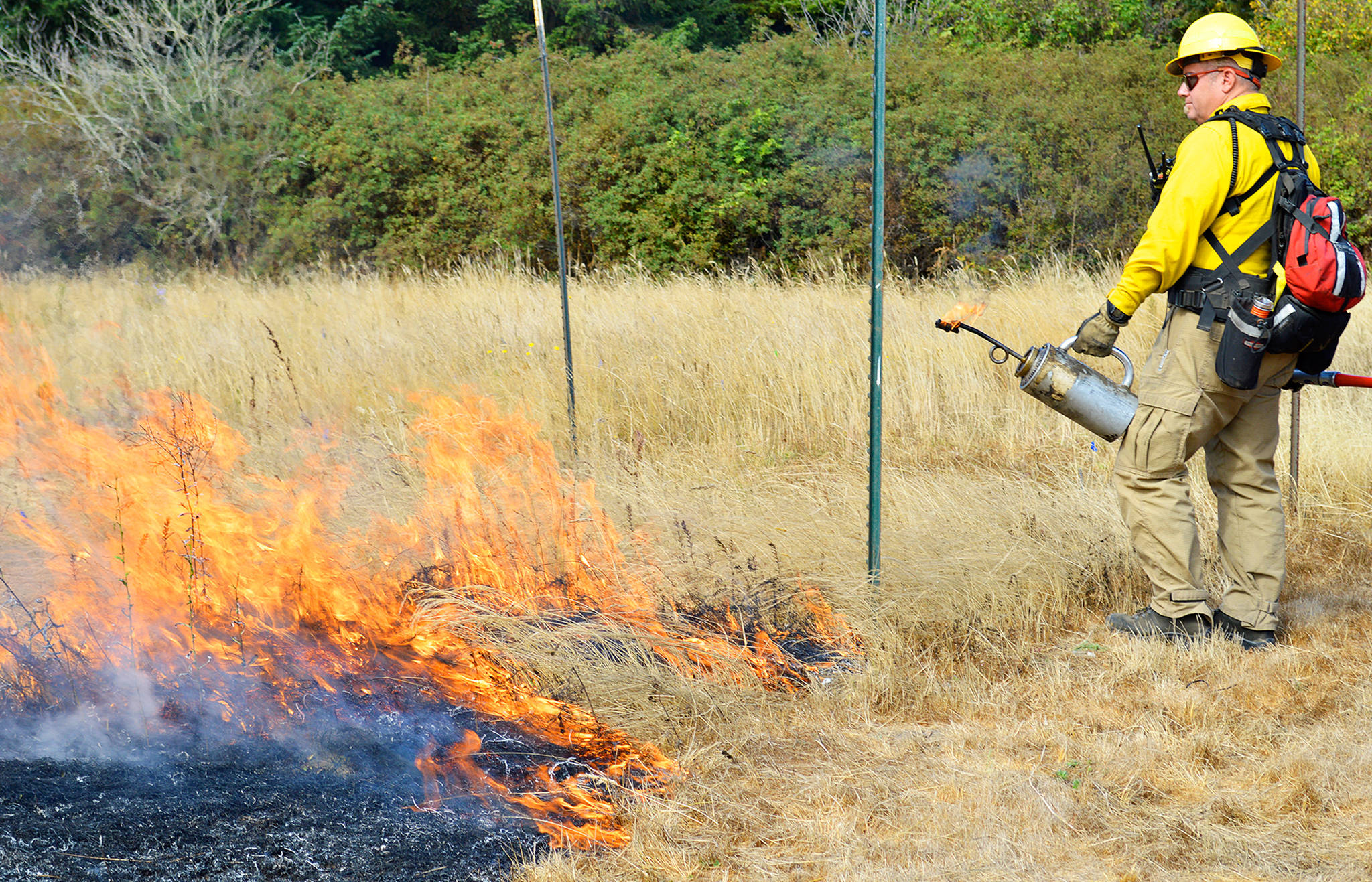Local organizations are turning to fire as a means of renewal.
It’s a method used for thousands of years by Native Americans, and it’s now being used to restore the greatly diminished prairie land on Central Whidbey.
On Thursday afternoon, the Whidbey Camano Land Trust and the Pacific Rim Institute oversaw controlled burns at two separate sites.
The Land Trust’s burn took place at their Admiralty Inlet Natural Area Preserve, and the Pacific Rim Institute’s burn occurred on their property near the institute.
Both organizations said they are hoping to burn out invasive plants to make way for plants that are native to the prairie.
The native plants are currently dormant and shouldn’t be affected by the burn, said Jessica Larson, land steward for the land trust.
The trust is especially intent on improving the habitat for the golden paintbrush, a rare plant classified as a threatened species by the federal government.
Before European settlement in the area, Native Americans burned the prairies regularly to keep out encroaching non-native plants.
“That native plants adapted to that,” said Robert Pelant, CEO of the institute.
During the 1850s, the burning ceased and the prairie land started to degrade.
With the introduction of invasive plants and agricultural grasses, the quality of the local ecosystem deteriorated rapidly, according to Pelant.
“Burning is a key tool in bringing back resilience to the ecosystem,” he said in a statement.
Though there is currently a burn ban in place in Island County, the two nonprofit groups were able to obtain a permit because of the time-sensitive nature of a prescribed burn.
Late summer is the ideal time to conduct a burn because the weather is hot and dry and there’s enough plant fuel, according the Larson.
The fires must get hot enough to burn the roots of the invasive plants and, with the high moisture content of the area, it takes more heat to do so.
Larson said the fires can’t be so intense that they kill the native plants they’re trying to protect.
“You don’t want a crazy hot fire that goes really deep and kills everything,” she said.
The Center for Natural Lands Management and Washington State Department of Natural Resources managed the burning at both sites.
Both groups specialize in this type of controlled burn.
Pacific Rim Institute coordinated with the Land Trust to do their burning on the same day so the same crew could do both in one trip to the island, according Pelant.
The Land Trust and Pacific Rim Institute burned around three and eight acres respectively.



